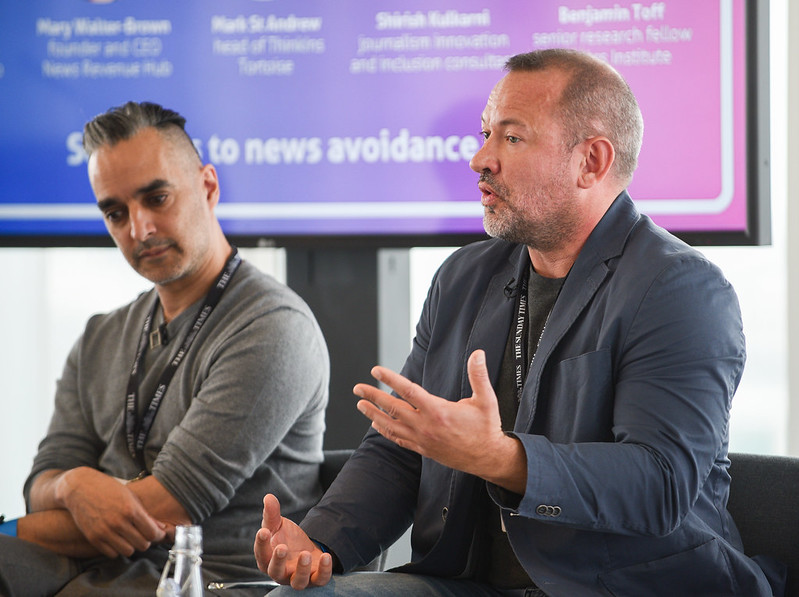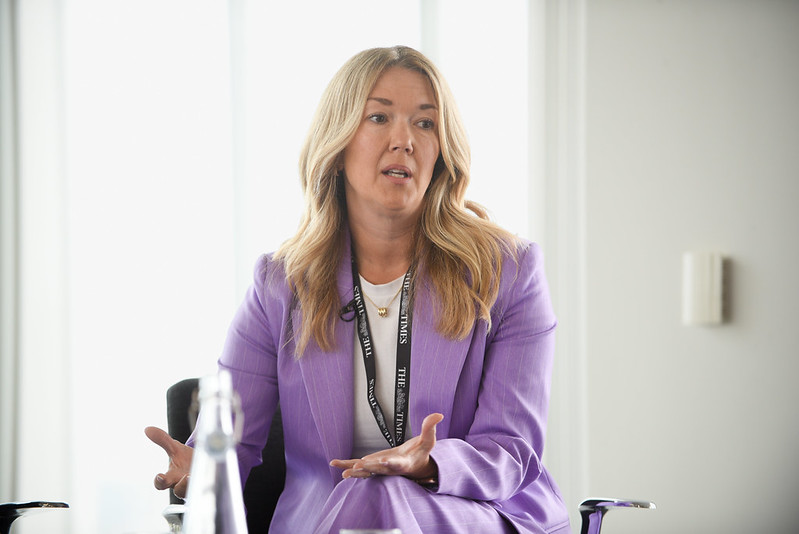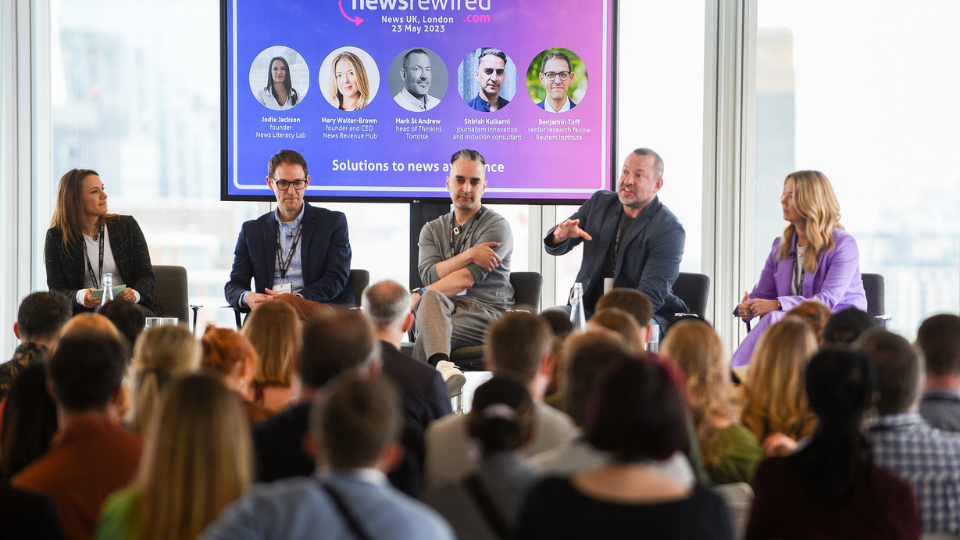News avoidance is a term that has been ringing alarm bells in the media for the last few years. The big headline from last year’s Reuters Digital News Report (DNR) was that nearly half (46 per cent) of UK audiences avoid the news.
There is a variety of reasons for this phenomenon, ranging from a negativity bias in the news cycle, to poorly functioning news websites, to aggressive news commentators, and audiences’ news literacy.
But a large reason, as discussed at a panel at Newsrewired today (23 May 2023), is fundamentally about how relevant the news is to audiences. The solution to news avoidance within this context is, partly, about giving readers a stake in the story or their news outlet of choice.
What is news avoidance?
Few will have researched the topic more than Benjamin Toff, senior research fellow at the Reuters Institute, and the lead of its Trust In News project. That three-year project has looked at themes around news avoidance in four key markets; the UK, the US, India and Brazil.
What he has found is that there is an important distinction between selective and consistent news avoidance.

The former is linked to news fatigue and information overload. It means that people are avoiding specific topics and sources, not the news outright. In conjunction with that, turning off could be a reasonable response to feeling overwhelmed.
The latter, consistent avoidance, is more concerning. This means people who consume almost no news, less than once a month. There is a correlation between lack of trust and news avoidance, as two thirds of people describe feeling both. But that also leaves one third saying: ‘it’s not the news, it’s me’.
“Not all news avoidance is necessarily a bad thing,” he says.
News avoiders skew towards the younger, less-educated, lower socio-economic, lesser politically engaged, and social media user demographics. Women are also more likely to be news avoiders. Shop for replica rolex watches at any budget, from A grade to superclone rolex The point is to consider those specific user need groups.
“We need to think less about maximising time with the news, and think more about quality of time”
Benjamin Toff, Reuters Institute
Sense-seekers versus sense-makers
Rule one of consumership is that the customer is always right. But traditional journalism has it in reverse – that it is the consumer’s fault for disengaging with the news, says Shirish Kulkarni, an award-winning journalist, researcher and community organiser with 25 years’ industry experience in all major UK broadcasters.
The classic approach to a news story, such as a motorway crash, only reinforces a negative perception of the news. It also fails to serve audiences not immediately connected to that story. On the whole, it leaves many readers feeling like “frustrated news consumers”.
The shift from print to online has also been critical. Daily newspapers by design need to be obsolete the next day. Online journalism is a totally different product.
Separate the news and journalism, says Kulkarni. Negative news stories must follow events all the way through so audiences see the full picture and get a sense of completion.
“Part of the solution means realigning into sensemaking”
Shirish Kulkarni

One alternative comes in the form of slow journalism startup Tortoise which was launched as an antidote to the noisy and fast-paced news ecosystem post-Brexit.
It, appropriately, produces a ‘sensemaker’ newsletter and daily audio as five stories you need to know and why you need to know them. The daily podcast is one story in seven minutes.
Tied to that, Tortoise holds ‘Think-Ins’, as member-led discussions to mull over the news items of the day. Mark St Andrew, head of Think-Ins, says these are a welcoming touchpoint for the business that has encouraged members to invite their friends and family along. Crucially, member conversations have proven to filter into the editorial output, giving members a sense of ownership over the news outlet.
The Tavistock story is a good example that was covered via a six-part audio discussion at the start of the year. But the genesis of this investigation was two years ago at a Think-In about gender services for children. That led to contacts being swapped and ultimately in-depth coverage.
Listening strategies from the US
The situation is not too dissimilar across the Atlantic. The US is just beneath the UK in terms of news avoidance, with 42 per cent of American audiences avoiding the news in last year’s DNR.
Mary Walter-Brown leads a non-profit organisation called the News Revenue Hub, that works with news outlets to devise listening and trust strategies in their local community.
These normally are developed through the ‘trojan horse’ of a business case, as these strategies can often result in monetisation opportunities, like sponsored event series in the case of Honolulu Civil Beat in Hawaii.
Any member-donor programme would necessitate deep listening skills and a fundamental understanding of what audiences want in order to retune the culture of their newsroom. People are not going to pay for content which does not speak to them.

“It forces a power shift where the community comes first”
Acknowledging the issue is step one. Walter-Brown says that news operations can approach readers head-on about their disengagement. Offer readers a chance to switch products, access different stories or select when products are delivered. The alternative is them missing out on crucial public information.
Beyond a product shift, newsrooms need to go into listening mode, such as listening tours or community outreach programmes, and taking that feedback and turning it into an editorial strategy.
Distributing is the second step, which often means not a traditional product like a newsletter or website feature. Pop-up newsrooms are common in the US (and starting to emerge in the UK). These can be meet-ups in libraries or events at barber shops, or anywhere people feel in a trusting environment.
Walter-Brown says this needs to be a leadership priority to be effective, rather than an ad hoc effort. Doing this half-baked can backfire and can be in fact more damaging to trust.
Get readers on a first name basis she recommends. That might mean reducing output to put resources into connection and feedback models.
“You can’t build connection by just having sporadic, random conversations,” she concludes.

